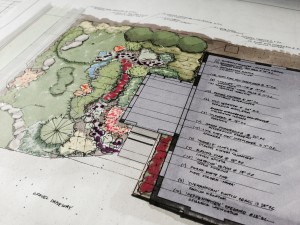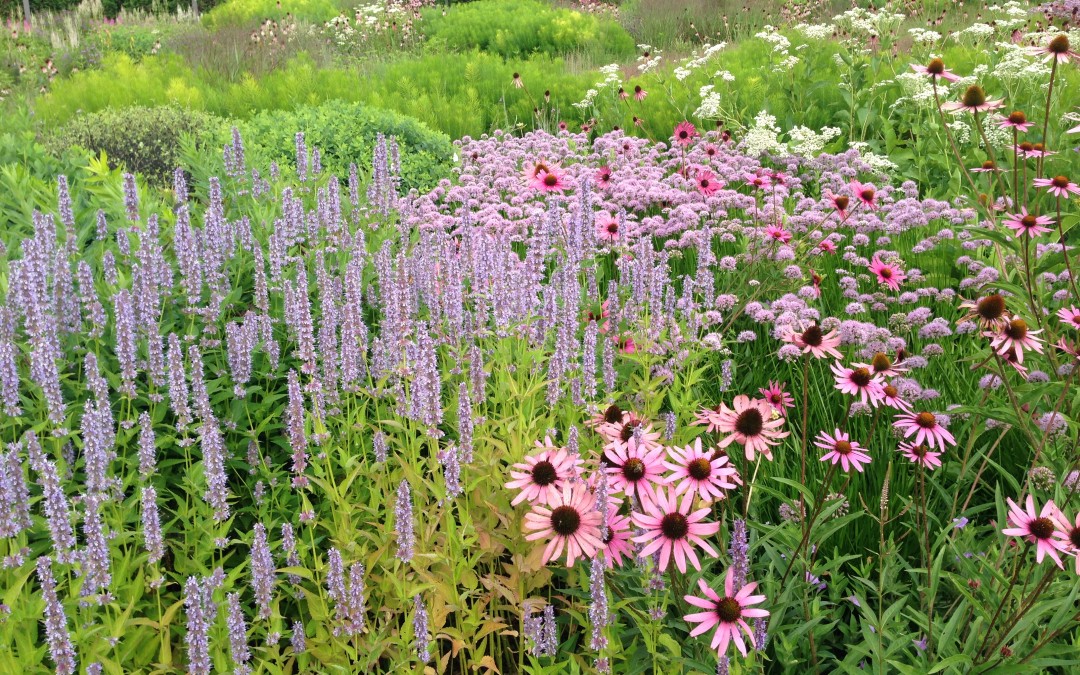Going native! Recently a client contacted us regarding her home landscape and she had two very specific requests. She told us that she did not want any lawn and wanted this to be a “native” landscape.  This being a home on a small urban lot the idea of not having any turf grass seemed plausible, and certainly a landscape using native plants is something we often do. But, in this case, there were a few design considerations that made it a challenge.
This being a home on a small urban lot the idea of not having any turf grass seemed plausible, and certainly a landscape using native plants is something we often do. But, in this case, there were a few design considerations that made it a challenge.
First, there was the challenge of not having any lawn. The cost and maintenance concerns of a turf-free yard are sometimes sizeable factors. Since we were dealing with a small lot these concerns really weren’t overly important. The larger issue was how the lack of lawn would affect the aesthetics. Something that may get overlooked about the traditional turf grass lawn is the beauty of its simplicity. It is a clean, simple, carpet that sets off the ornamental plants in the yard. And it’s a low growing groundcover that allows you to actually see all of the ornamental plants in the landscape. A landscape without the repose of the lawn would risk being overly “busy”. So an alternative groundcover seemed in order.
Since it was a fairly sunny location the native plant palette would need to be based on plants that exist in a native tall grass prairie. But the problem was that there really are few if any native prairie plants that are low growing and work well in a mass planting as a groundcover. On a larger scale some shorter grasses might work. But on this very small site they wouldn’t work well. So, a compromise had to be made and we would need to find a suitable non-native alternative. Some of the more common landscape groundcovers like creeping myrtle or purple leaf wintercreeper would not only look out of place in this type of landscape but their propensity for invasiveness would be completely out of step with the objective of sustainability through a native landscape. In the end the right choice seemed to be Waldsteinia or Barren Strawberry. While not native to this area it would fit the aesthetics of the project and would be a strong performing plant with little demand for water and no pest problems that could require chemical treatment, an important part of the function of this landscape.
So, when thinking about doing a native landscape you have to ask yourself how strict will you be with your plant selections. A tall grass prairie over gently rolling hills is a beautiful and sustainable landscape, but it isn’t as simple as cutting and pasting it into an urban or residential setting. In the end there may in fact be non-native plants that would be the perfect plant for the aesthetic of a designed native landscape and honor the principle of sustainability that people are looking for in installing a native garden at home.

